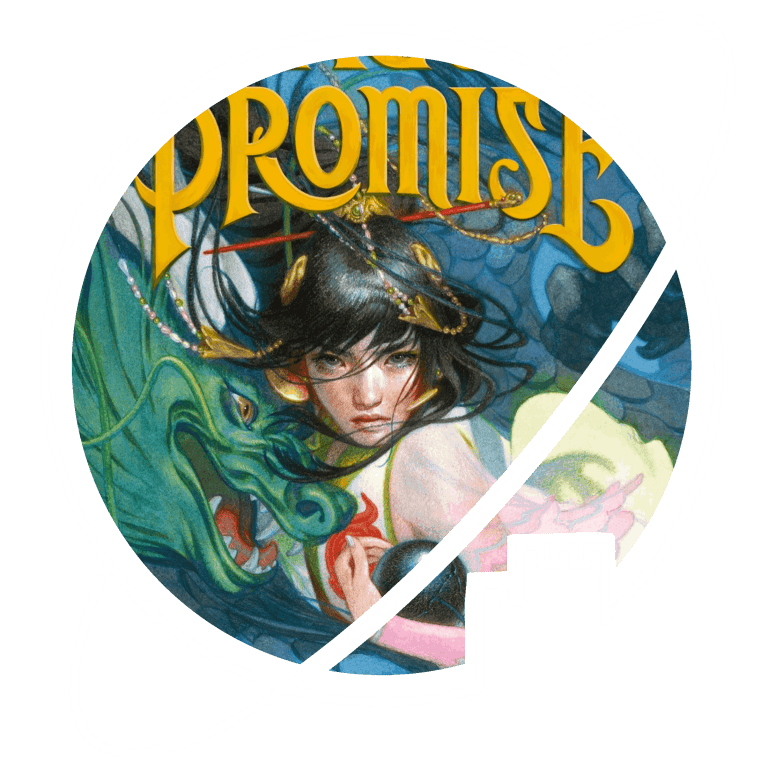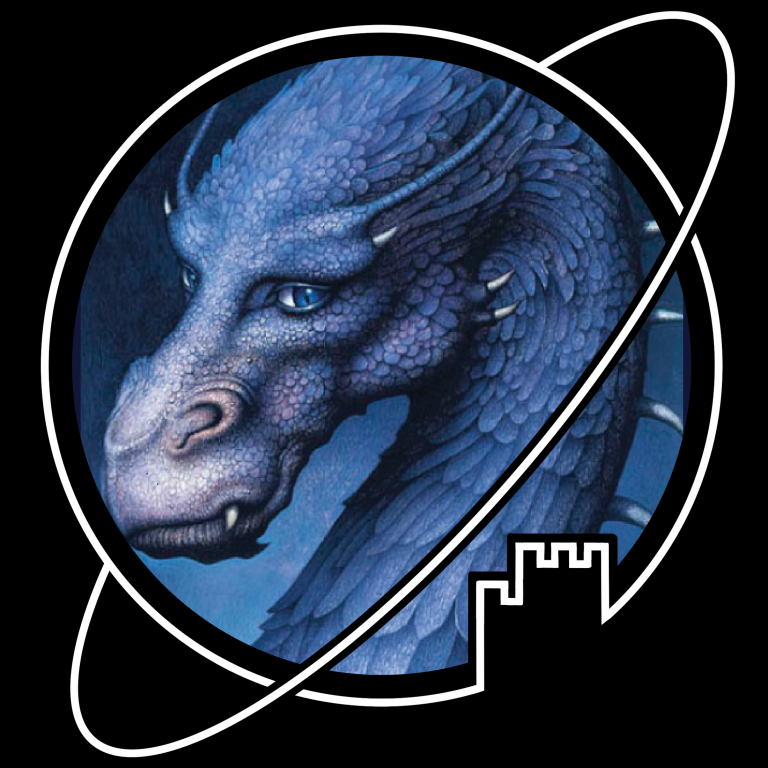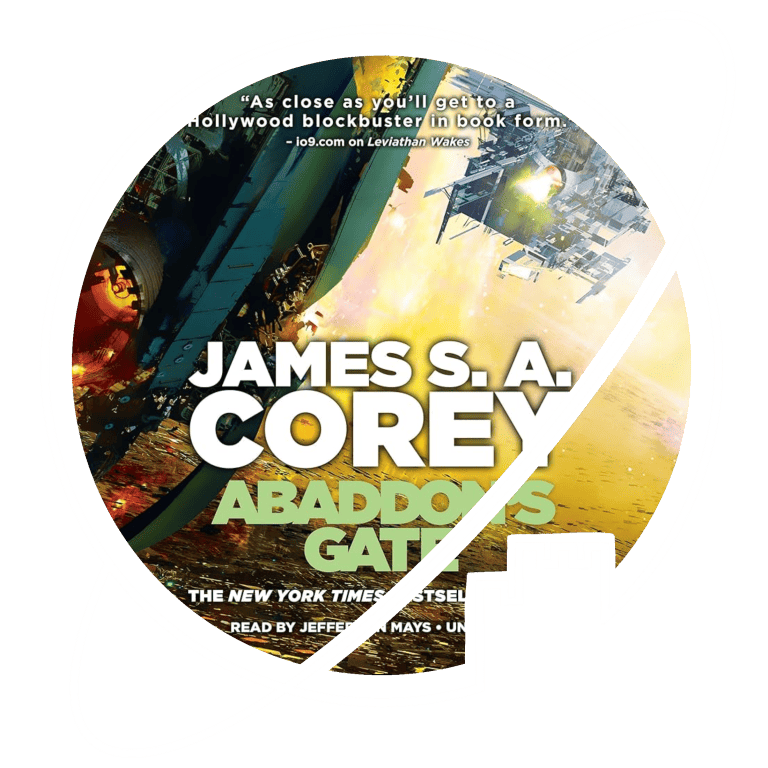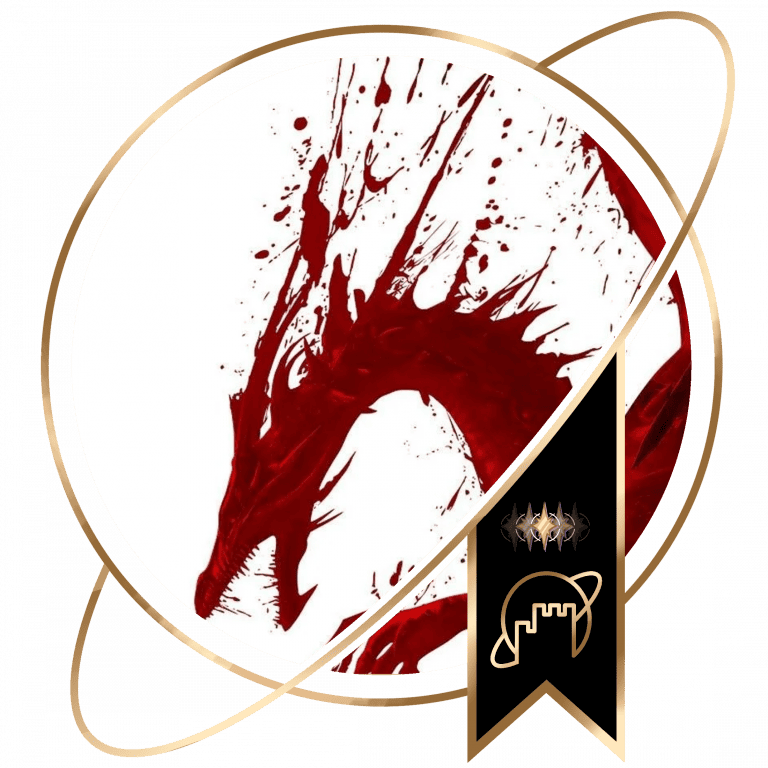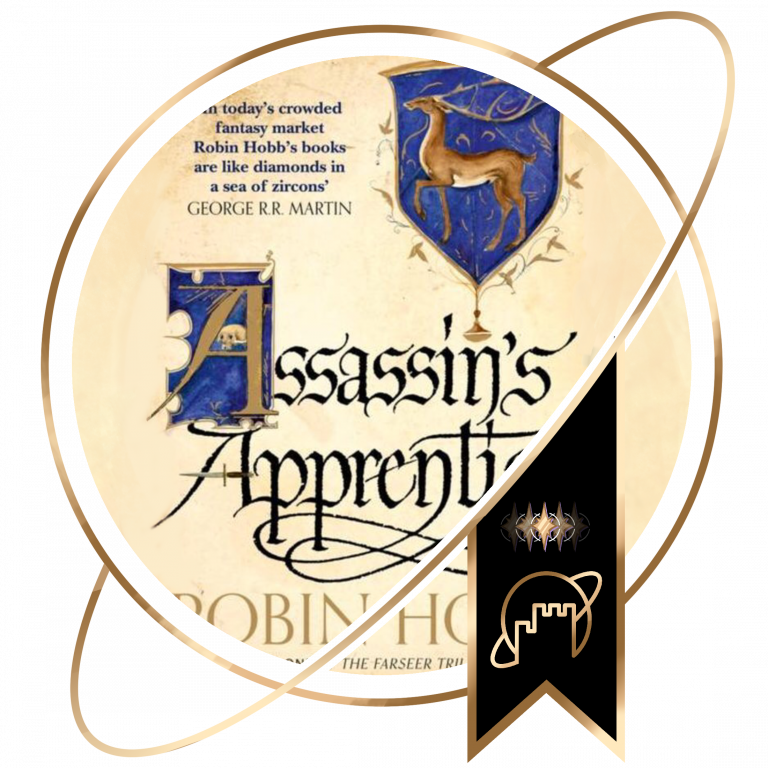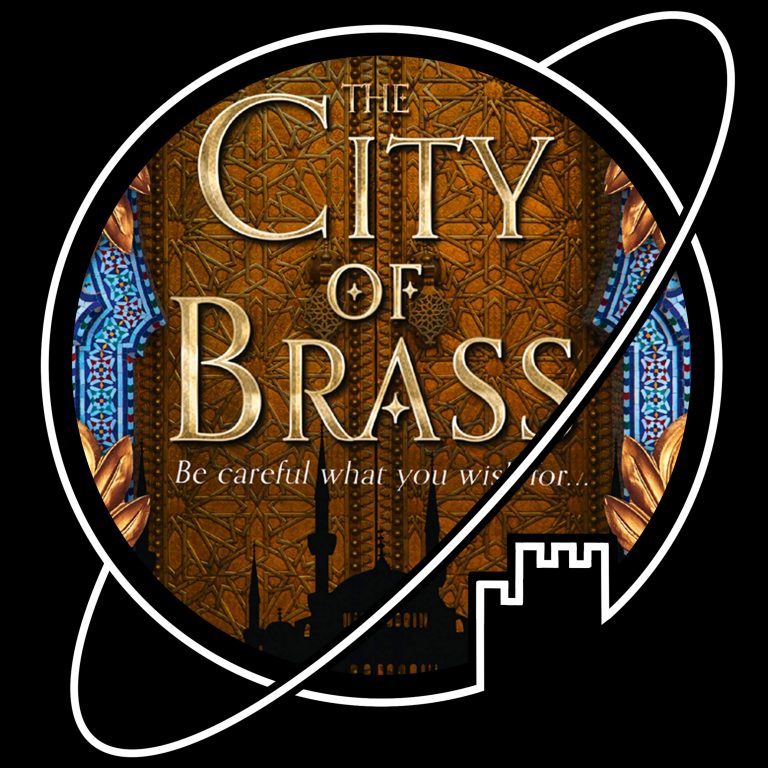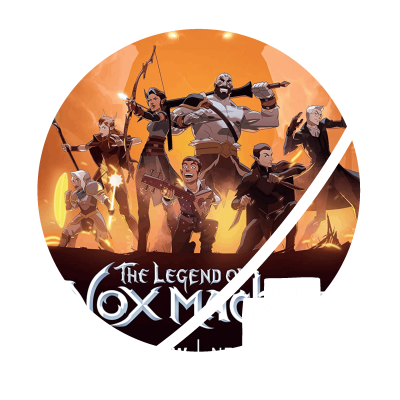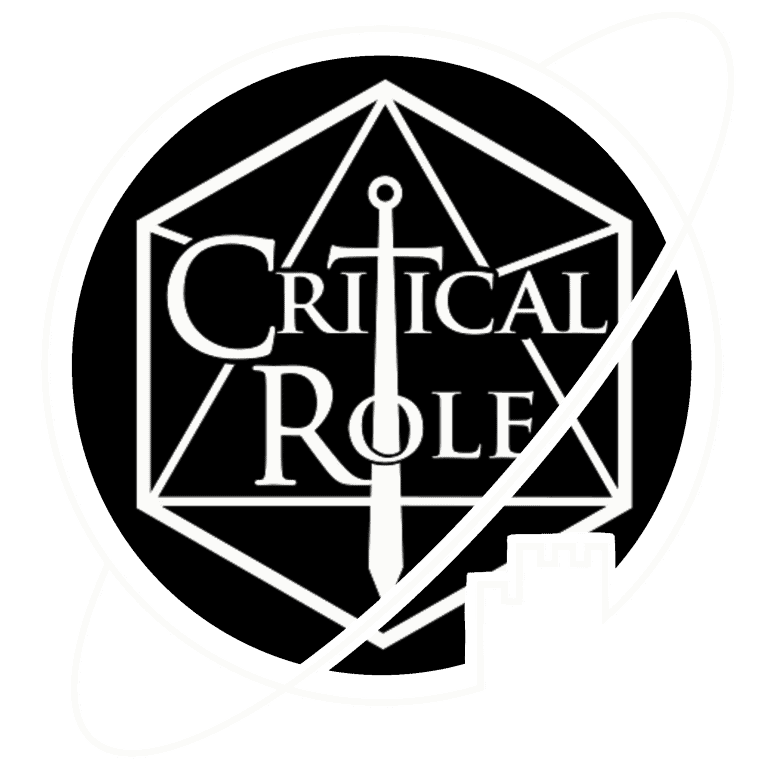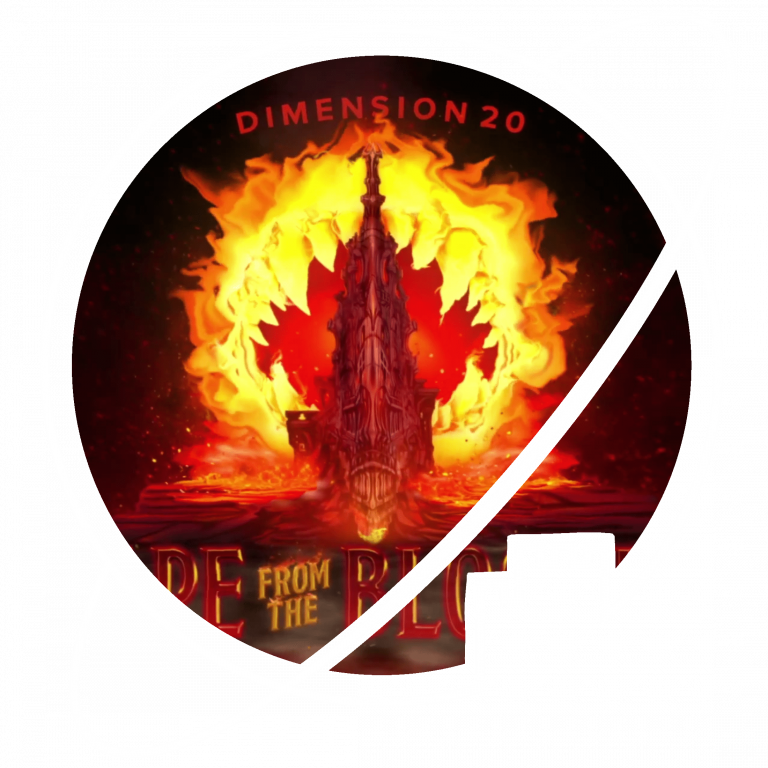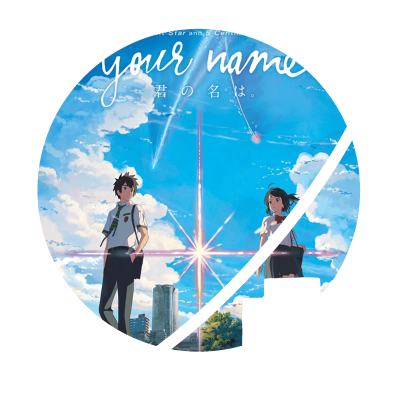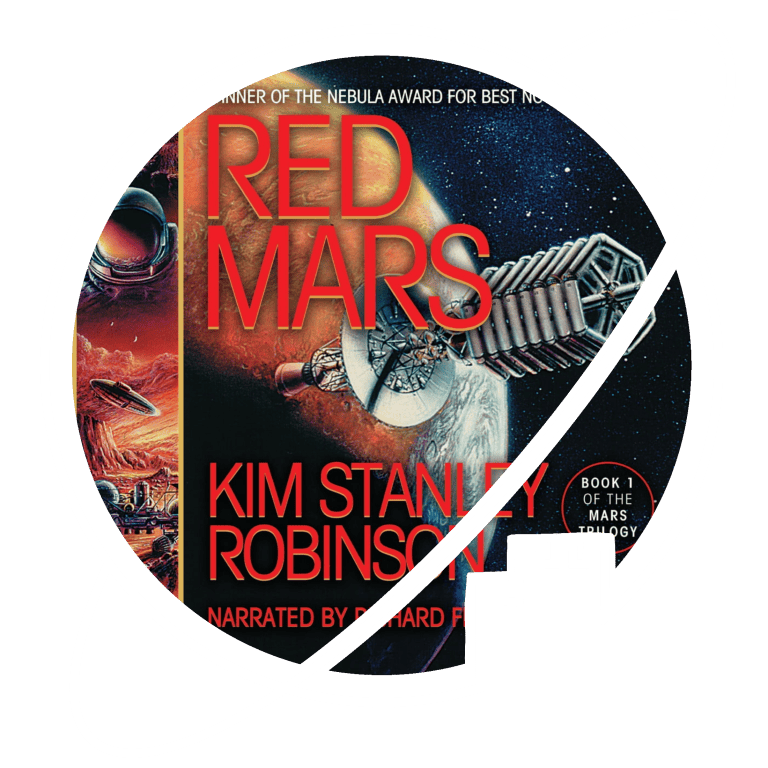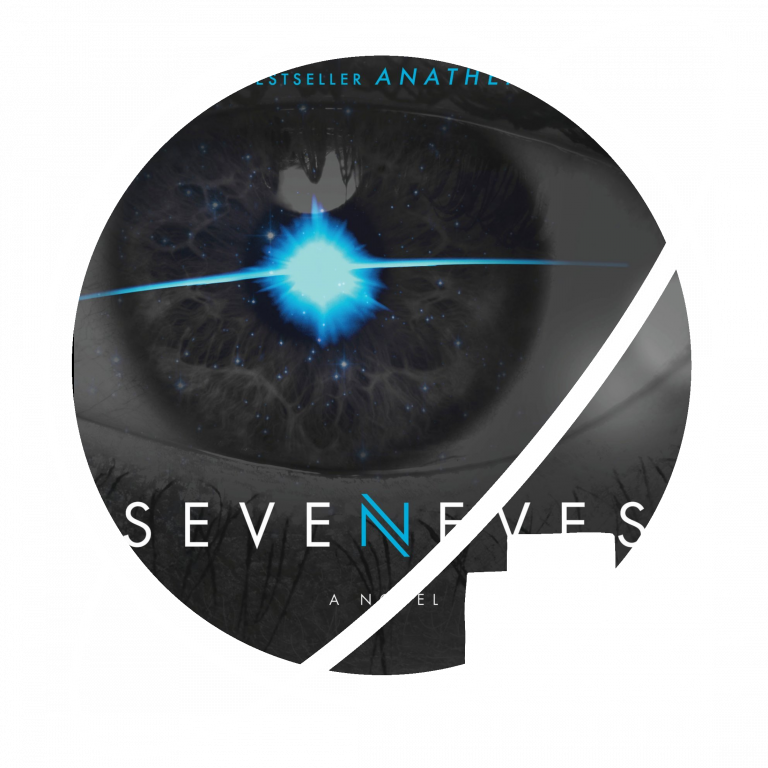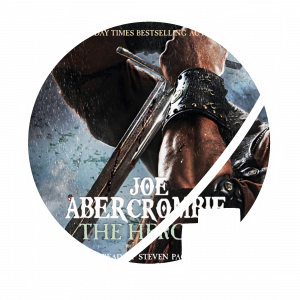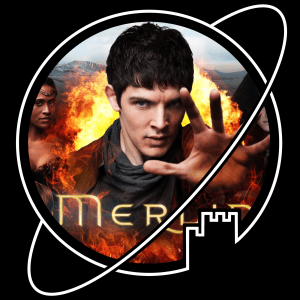A curated Collection of Fantasy and Science Fiction Media
Recent Updates
- Novel written by Elizabeth Lim
- Published July 6, 2021
- Part one of Six Crimson Cranes (duology)
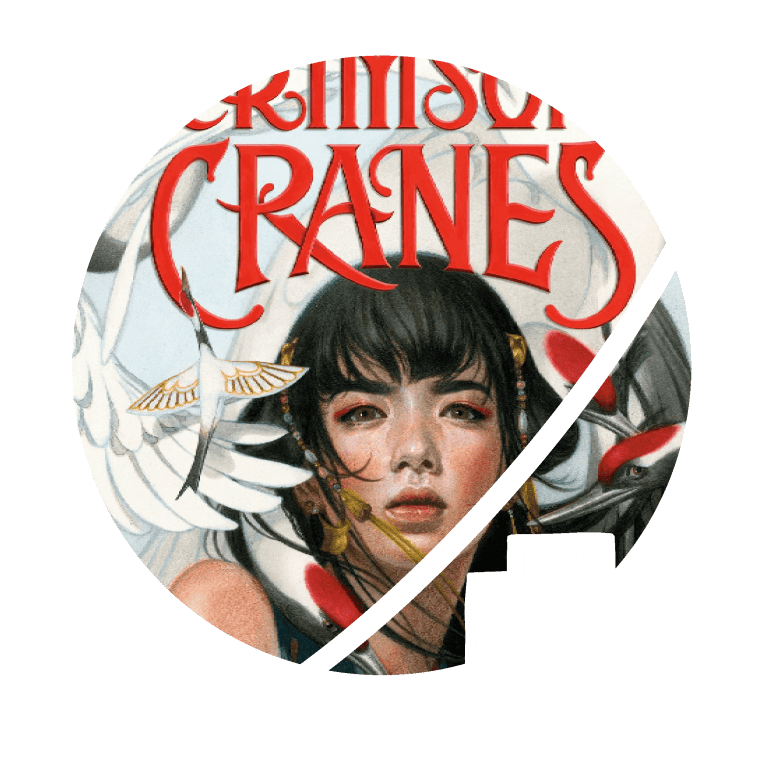

I bought this book because of the stunning covers of this series. I have the Kelly Chong version of this novel and let me tell you: she’s a real beauty.
Unfortunately the actual story just wasn’t quite for me. Six Crimson Cranes is a retelling of the fairy tale The Wild Swans by Hans Christian Andersen. It follows the original fairy tale pretty directly, although it is set in an East Asian fantasy world.
I think my main issue with the book is that, while it is about 450 pages long, it never really seems to go much deeper than a fairy tale would. The main character Shiori is a stubborn spoiled princess who learns to work hard and respect others. She has magical powers, which is a Big Deal, except she never really uses them, and the story would have been no different if she hadn’t had those powers.
Her brothers never get much development because there are 6 of them (and also they spend half the story as birds, so there’s that). The main love interest is nice and brave but not much more, and also there’s a dragon we are led to believe will be an important character, but he won’t actually be relevant until the sequel. The dialogue is a little clunky and unrealistic, and the descriptions are often lacking, which meant I spent a good amount of time wondering where certain characters were, or how they got from one place to another.
I really liked the East Asian setting, but I didn’t feel like it was developed well enough to really intrigue me.
The ending also didn’t quite satisfy me, which ultimately led me to give this book 3 stars instead of 3.5. The main villain was someone I didn’t even remember being part of the story and I’m still not sure how Shiori ended up breaking the curse.
Overall, I certainly didn’t have a bad time reading this book. I definitely think this is suitable for younger readers. I think this is classified as Young Adult, but I personally think it’s most suited to teen readers.
- Book written by James S.A. Corey
- Published 26 June 2012
- Part 2 of The Expanse
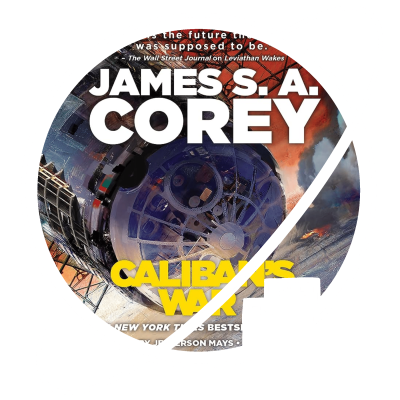

I liked Leviathan Wakes a lot, so I’m actually surprised it took me half a year to get to Caliban’s War – part of the problem must be that I’m reading the series on paper, and I read more by listening than by reading. Don’t let my slowness in picking up this book discourage you from trying it though!
One of the cover blurbs for the The Expanse-book series describes them as a Hollywood-blockbuster in book form, and I think that description is pretty accurate. Caliban’s War is expertly paced, with jumps of perspective meaning there is always something going on, until all those separate lines intersect at the big climax. The subject matter doesn’t exactly make it a light read, but it is certainly a page turner, with easy prose and enough lightness in between the dark to keep it easy to digest.
The downside of the ‘blockbuster in book-form’-style, is that the story itself, while engaging, is rather run-of-the-mill. You’re not reading The Expanse for its mind-blowing plot-twists or carefully constructed mysteries, but rather for the banter between the characters and the tense moments where the bullets ricochet off the pages.
While reading Caliban’s War, it struck me that The Expanse has quite a few similarities to Brandon Sanderson’s writing: both read like movie scripts at times, with super-fast prose and lengthy battle scenes. But where I feel Sanderson’s characters never really come to life and he specialises in plot, Corey doesn’t focus on the plot too much but instead zooms in on that found family trope we see so often in space ship crews – in modern fiction like The Long Way Round to a Small Angry Planet through Firefly and Star Wars all the way back to classics (and I use that word here without meaning to attach the connotation of quality) like Ringworld.
Mixed with just enough near(ish)-future medium-hard sci-fi, The Expanse actually takes an interesting position in that list, since all of the other examples (except, perhaps, to some extent Ringworld) are really ‘sci-fi-as-a-setting’-type stories. Caliban’s War actually moves further away from hard sci-fi, a move that was already apparent by the end of Leviathan Wakes, and to be honest, I think it improves the book. It is mostly still very much within the realms of the plausible and certain elements – such as time delay in communications – remind the reader that the story is set in a universe that conforms – at least mostly – to the same rules as our own. That, in turn, makes it extra horrific when those rules still get broken.
Caliban’s War takes The Expanse in a slightly simpler direction, and I think that is probably the right place for it to go. I’m curious where the next instalments will take us, and I hope especially that we’ll get to read more from the perspective of Chrisjen Avasarala – who doesn’t love a foul-mouthed political realist grandmother who runs half of Earth’s government?
Tagged:
See also:
- Book written by Samantha Shannon
- Published 26 February 2019
- Standalone, though a prequel has been published
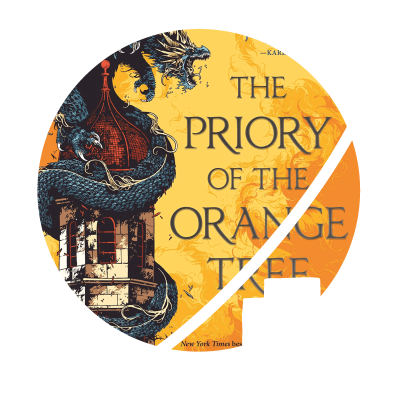
Good gods, will you look at that cover! It is amazing!

I’d seen this book around for a long time, and have been looking forward to reading it because the cover is SO pretty. It’s also about five million pages long.
I have to be honest, I wasn’t immediately sold on The Priory of the Orange Tree. At the beginning, I really worried it would fall into the same trap that A Song of Ice and Fire fell into: too many characters in too many different places of the world. I don’t like spending a chapter with one character and then having to wait 100 pages before we get back to them again. Fortunately, The Priory of the Orange Tree doesn’t have quite as many characters as A Game of Thrones, and more importantly, Samantha Shannon set out to finish the story in one book. Yeah. Take that in. This book actually ends. There is potential for more stories in the world Shannon has built, but it’s quite unusual nowadays to see a fantasy book of this scope that is a standalone novel.
As I mentioned, it did take me a while to fully get into the story. Until page 300 or so, I didn’t much care for any of the characters, and the plot didn’t seem to… really exist? So if you pick this one up, be sure to give it some time! At the end, I promise it will have been worth it!

The Priory of the Orange Tree might be one of the most difficult reviews I’ve written since we started this website. The reason is that my opinions of this book are all over the place, and that is probably because the quality of the book was all over the place.
Some chapters and storylines are really well written, while I found others clunky and underdeveloped (looking at you, Loth). Some of the world building was really cool, while some of it came up a paragraph before it became relevant. Some chapters are emotionally really satisfying, while others feel tonally jarring. At times I was feeling like I was reading top of the line Fantasy, at times I felt like I was reading an under-edited draft. It is really difficult to give a general critique because the quality was so inconsistent.
Let me start with some elements of The Priory of the Orange Tree that I really liked. I love that the book takes both Western and Eastern mythology as inspiration. I love that Shannon contrasts Eastern and Western dragons in her story, tying into the medieval perceptions of those creatures in both cultures. I really love the sort-of-but-not-quite-alternate history vibe that the book has going on. I love that some of the book’s nations are clearly identifiable as inspired by places such as Britain, the Dutch Republic, Japan, and China. I think the book has some awesome characters – in particular Ead and Sabran are well fleshed out and great to read about. I really admire Shannon for trying to tell the story in a single book rather than spreading it over a trilogy. The cover is probably the best Fantasy cover in my bookcase, period.
There are also things I liked less. I think that Shannon probably tried to cram just a bit too much into a single book – it is really long at 800 pages and the pacing doesn’t quite pull you through. Another result of this being a single book is that certain elements of worldbuilding feel underdeveloped: I would have loved more depth on the different nations, both in the East and West. Even Inys and Seiiki, which get most of the attention, could have been fleshed out more. Sometimes, solutions to problems just appear with no explanation or foreshadowing, and make you wonder why you hadn’t heard of them before. Sometimes, problems appear for no apparent reason (I still don’t understand the riddles in this book – I like riddles, but it makes no sense for the people who came up with those riddles to do so). There is some politics in this book, but the court intrigue doesn’t get the pages it needs to really work.
And then there is the names – oof. In particular, the Dutch-themed Mentendon has a bunch of pseudo-Dutch names that caused me much gnashing of teeth. Some, like ‘Truyde’, are real Dutch names. That’s fine. But some of the shit Shannon thought of herself… the city of ‘Zeedeur’ had me choking with laughter. That’s a literal translation of ‘Sea door’ and sounds utterly dumb in Dutch. In archaic Dutch, you can change the sound of some vowels by adding a ‘y’, representing ‘ij’. It works for ‘uy’ or ‘ey’. Shannon does it with ‘ay’, which… doesn’t work. It’d have to be ‘aey’. So… she doesn’t really know. And it is painfully obvious. I don’t know why, but this bothered me. A lot. Do with it what you will.
Overall, I think The Priory of the Orange Tree is really a book for the less critical reader. There is a lot to love, and if you’re not too bothered by my gripes then I am sure you’ll enjoy reading it. Perhaps Fantasy veterans will be disappointed by the worldbuilding. Perhaps narrative experts will feel like it lacks foreshadowing. But dragon lovers are sure to get their fill, and the imaginative world did make me want to return to it. I enjoyed The Priory of the Orange Tree, but for some reason I had expected it to be an instant classic – it wasn’t so I felt a little let down. But if you go in with tempered expectations, The Priory is well worth your time.
Tagged:
See also:
- TV show developed by Critical Role for Amazon Prime
- Released in 2022
- Starring Laura Bailey, Taliesin Jaffe, Ashley Johnson, Matthew Mercer, Liam O'Brien, Marisha Ray, Sam Riegel and Travis Willingham
- 2 Seasons of 12 Episodes each, as of July 2023

This review relates to season 1 and 2.
I really loved campaign one of Critical Role. It was the first Actual play D&D campaign that I watched and I was super impressed by their ability to mix comedy and drama. While I’m not exactly up to date on Critical Role nowadays (I’ve watched exactly half of an episode of Campaign 3) I was still super excited to hear about their Animated Series coming out. Did I watch it a year after its release? Yes. But that’s only because I didn’t want to get an Amazon Prime account and I needed to find someone else to sell their soul instead of me (so thanks for that, Peter!).
Overall, I liked season one. The pacing was a little bit strange, which I think was a result of the short season length. In the original game, there’s a lot of downtime. That downtime is where a lot of character development happens. Because of the pacing of The Legend of Vox Machina, it’s hard to really connect with the characters. They are constantly “on”. Vex’Ahlia is one of my favourite characters, but in The Legend of Vox Machina, she doesn’t quite have the time to show both her sharp and her soft sides. She’s constantly a little bitchy. In the original campaign she has much more time to be funny and charming and off-duty, if you will.
A similar thing happens with Scanlan. In the campaign, his actions may often annoy the other characters, but the players are folded over laughing. In the show, we don’t see the reaction from the players. He is funny, but when he does things the other characters perceive as annoying, there’s little to remind you that that can be funny as well. Compare it to a laughing track: take that away, and we no longer know which jokes to laugh at.
To be fair they did omit some stuff from the campaign that either didn’t age well or was funny because the cast seemed to have a strong connection and knowledge of each other’s boundaries. Take for example Scanlan’s crush on Pike, which is much more inappropriate in the original Campaign. These things wouldn’t have translated well to the show and I’m glad they left them out.
So the pacing is a little weird, which made it harder to connect with the characters. I would love a format more like Avatar: The Last Airbender. That show had filler episodes that gave us time to really bond with the main cast.
Aside from the pacing, the story is good and the writing is fine. Nothing ground breaking but serviceable for a fantasy series of its kind.
Season two is definitely better than season one. There’s less pressure to “introduce” the characters, so everything happens a little more organically than in season one. I can imagine the stakes also get a little higher once viewers are familiar with the characters and care a bit more about what happens to them.
I actually really wonder what it’s like to watch this without knowing Critical Role. Things that get to marinate a little longer in the campaign happen really quickly in the Legend of Vox Machina. An iconic scene from Critical Role which takes like 30 minutes to play out is over in 10 seconds in The Legend of Vox Machina. I often found myself going to Youtube to rewatch the original scenes because seeing it happen in TLOVM just didn’t scratch that itch the same way.

This review relates to season 1 and 2.
Similar to Lotte, I waited till Peter got Amazon Prime before I started watching The Legend of Vox Machina. As a fan of Critical Role’s actual play campaigns, I was very curious to see the adaptation. The Vox Machina campaign and characters are not my favourite (Mighty Nein, you are the best and I can’t wait for your series), but I could think of a few events that would look great when animated.
The first season left me a little underwhelmed. I more of less binged it and I was entertained. However, it lacked the emotional depth and the casual humour that made me fall in love with Critical Role in the first place. Maybe because it had the difficult task to set up the setting and characters in relatively few episodes.
I liked the second season much better. Maybe because the pacing suited me better. Or maybe just because it had a lot of dragons destroying civilization, something I always thoroughly enjoy.
The Legend of Vox Machina is a good place to start if you want to get somewhat involved with the Critical Role fandom, but are afraid of their thousands of hours of content. As an animation series on itself it’s okay, but not the best or most original out there.
Tagged:
See also:
- Movie directed by Makoto Shinkai
- Starring Ryunosuke Kamiki, Mone Kamishiraishi
- 26 August 2016
- Runtime: 107 minutes

Before I launch into my review, I just want to fire a couple of shots at the other curators -we totally watched this movie together to review it over a year ago and then I was the only one who did. (You guys are free to remove this underhanded stab once one of you has added their review!) So. Anyway. Let’s get into it.
There is a pattern when I read/watch/whatever non-western media, love the art style or the premise etc., get really into it… and then the stories diverge from conventional western plot structure and as a result the ending leaves me unsatisfied and irritated. To grab a few random examples: I felt that the broadly praised The Three-Body Problem had some interesting ideas but pretty poor writing overall. I was intrigued by Nnedi Okorafor’s Who Fears Death but its story progression felt as random as a swallow in the sky. And while I loved the atmosphere in Miyazaki’s Howl’s Moving Castle, the ending had me scratching my head.
The main reason, I think, is that non-western stories tend to structure the resolution of their plots around emotion more than most western media do. And it turns out I am a logic-driven reader and viewer.
Unfortunately, Your Name was no different. I think it looked great. The premise might not be that original, but it was executed very well and the movie kept me engaged throughout the first three quarters of its runtime. But by the time it was starting to work towards a conclusion, I found myself frowning more and more, trying to follow what was happening and why it was happening and how the rules worked and I couldn’t make sense of it – which is especially weird in a movie like this that features – slight spoiler? – time/dimensional travel like this.
I have to admit that by the final scenes I was planning the other curators’ food order rather than focussing on what should probably have been a satisfying climax. But all I could see was a string of emotional beats with no set up in the story and no connecting tissue. That experience felt very familiar because I have it with almost all Ghibli-movies. The same curse all over again.
Does that mean Your Name is a bad movie? Probably not, because you’re probably not watching it for the deeply engaging plot but rather for the pretty pictures and strong vibes. And I think those emotional beats hit home in a way that was somehow more convincing in such a stylised animated world than if they would have been the climax of a live acted Hollywood drama. If I’m trying to catch it in a single phrase, Your Name is very good at the things it wants to be very good at. Just… don’t expect to make any logical sense of it.
- Book written by Kim Stanley Robinson
- Published October 1993
- Part 2 of the Mars Trilogy


Listened to the audiobook with Richard Ferrone, who fit the book really well.
In many ways, Green Mars is comparable to Red Mars: it is still very much a diamond hard sci-fi about terraforming Mars against a backdrop of political struggles on the red planet as well as back on earth. Robinson places scientists in the shoes of heroes, and I really like the awkwardness – and realness – that it creates. I think only Robinson could make a scientific conference attended by a socially awkward/neurodivergent physicist into a great narrative.
Green Mars picks up where Red Mars left off – that it is to say, like Red Mars, it time jumps forward often to cover more ground, but neatly picks up the narrative.
The narrative in the case of Green Mars is that of a ‘big tent’ movement of various different Martian ‘resistance’ groups going up against the big metanational corporations of Earth who see Mars as nothing but a mineral deposit. The various personal struggles of the first 100 colonists and their descendants are still a throughline.
Green Mars is slightly different from Red Mars in that it is somewhat more plot driven (and consequently, somewhat less character driven) than Red Mars. And it feels like Robinson’s editor took a step back on the project, allowing for even longer sections of explanation of the geological and climatological shifts on Mars. I’m torn on whether those tangents are really cool or whether they just clog up the narrative; and it probably really depends on what exactly Robinson is explaining. I have to admit that I dreamed off during some of them, but then I was also listening intently to others. At least, none of them felt as non-sequitur as a chapter on feral hogs in Texas.
So Green Mars is perhaps best described as a more intense version of Red Mars. Folk who like the Kim Stanley Robinson or Neal Stephenson style of hard sci-fi with plenty of space for tangents and explanations, will love this book.
I liked it myself, though a little less so than Red Mars. I think Robinson does politics really well and so I didn’t mind that politics played more of a role. But I do think that Green Mars has maybe just a little too much geological surveys for my liking. And it took me a while to get into the book, because the first section didn’t grab my attention as much as the beginning of Red Mars did.
Overall, I’m a bit surprised that Green Mars won the Hugo but Red Mars didn’t – might be a matter of competition, or possibly of the series’ popularity lagging a little behind its release. Either way, Green Mars was still a very good read, and I’m looking forward to Blue Mars!
Tagged:
See also:
© 2023 – Escape Velocity – A Curated Collection of Fantasy and Science Fiction Media
Privacy Overview
| Cookie | Duration | Description |
|---|---|---|
| cookielawinfo-checkbox-analytics | 11 months | This cookie is set by GDPR Cookie Consent plugin. The cookie is used to store the user consent for the cookies in the category "Analytics". |
| cookielawinfo-checkbox-functional | 11 months | The cookie is set by GDPR cookie consent to record the user consent for the cookies in the category "Functional". |
| cookielawinfo-checkbox-necessary | 11 months | This cookie is set by GDPR Cookie Consent plugin. The cookies is used to store the user consent for the cookies in the category "Necessary". |
| cookielawinfo-checkbox-others | 11 months | This cookie is set by GDPR Cookie Consent plugin. The cookie is used to store the user consent for the cookies in the category "Other. |
| cookielawinfo-checkbox-performance | 11 months | This cookie is set by GDPR Cookie Consent plugin. The cookie is used to store the user consent for the cookies in the category "Performance". |
| viewed_cookie_policy | 11 months | The cookie is set by the GDPR Cookie Consent plugin and is used to store whether or not user has consented to the use of cookies. It does not store any personal data. |






